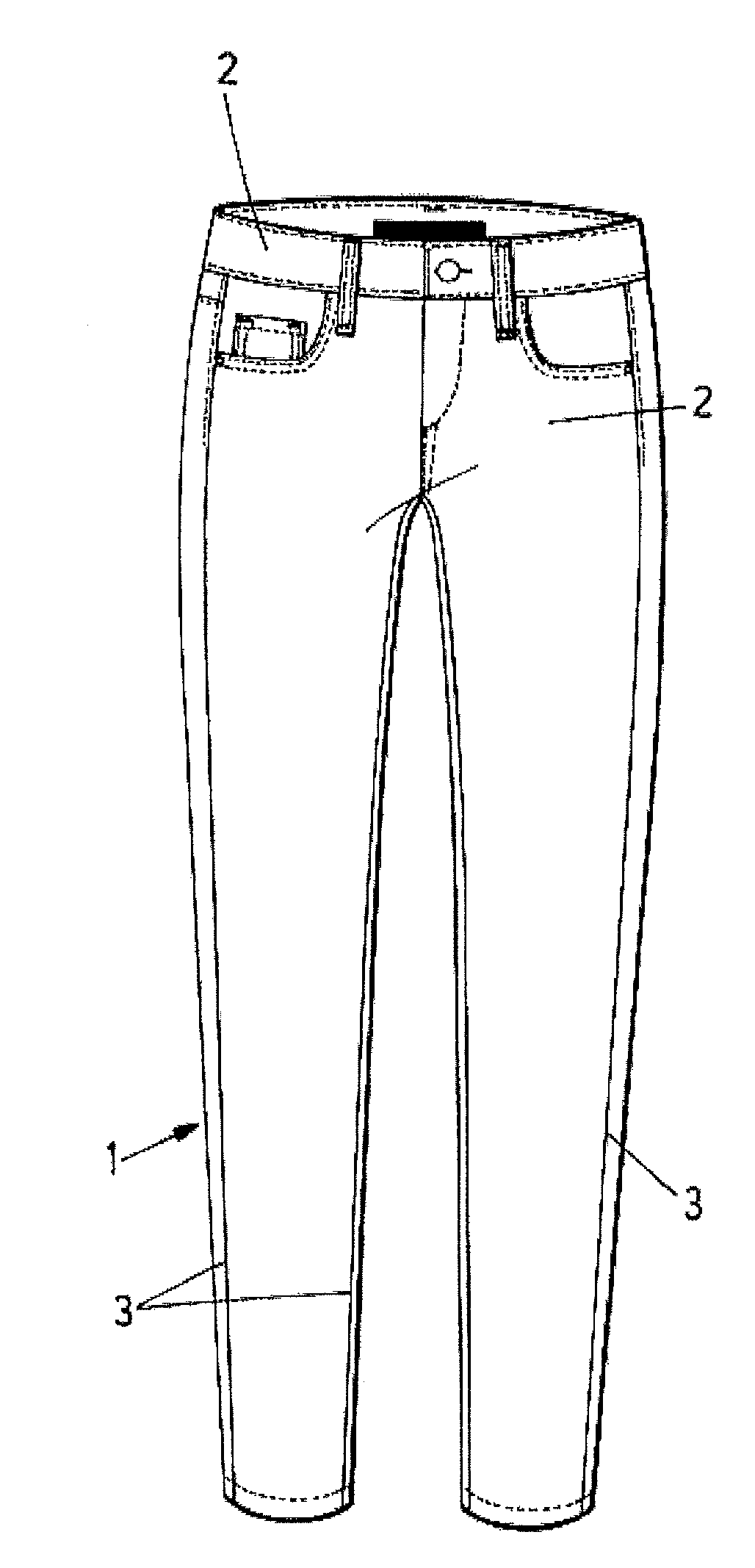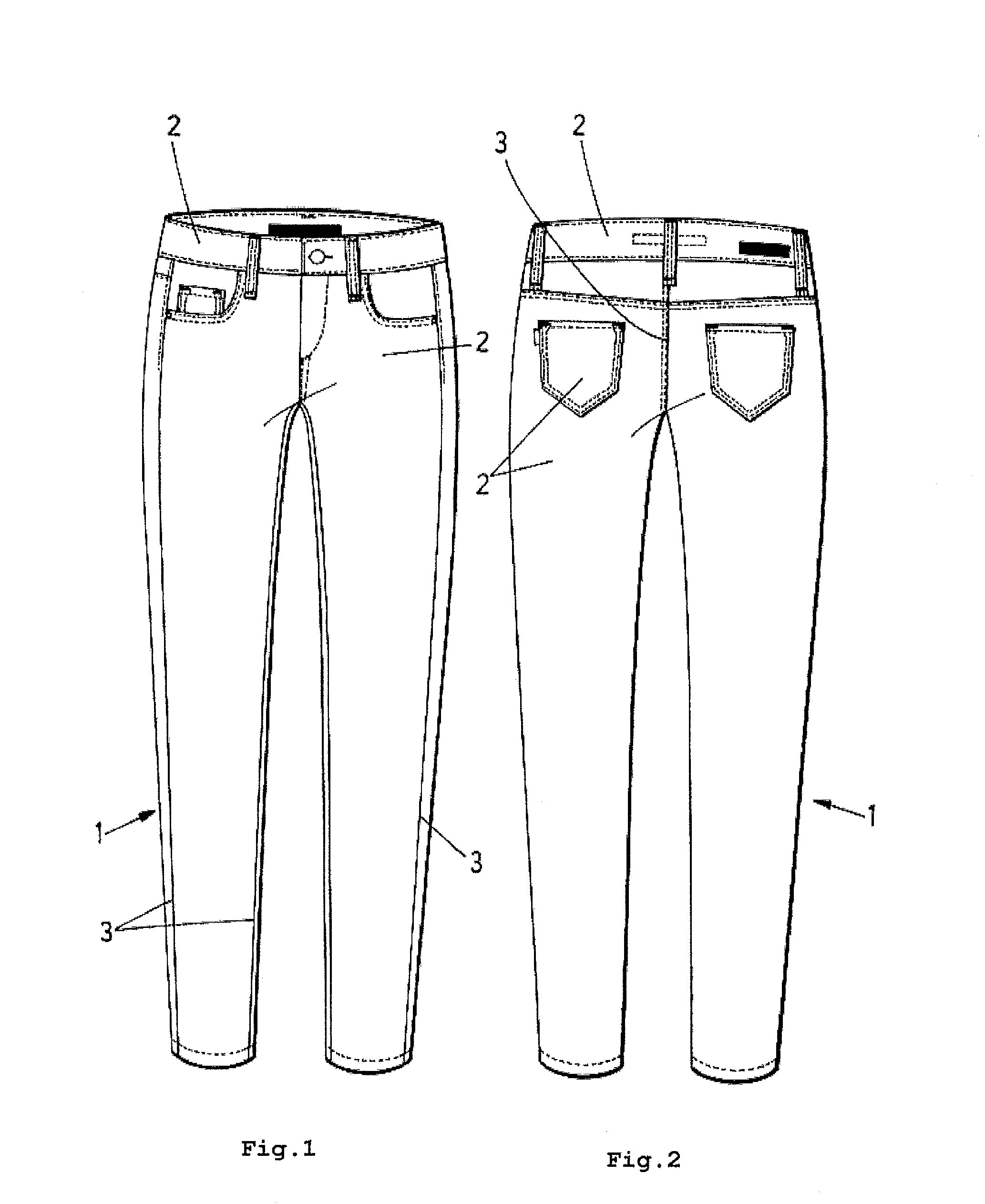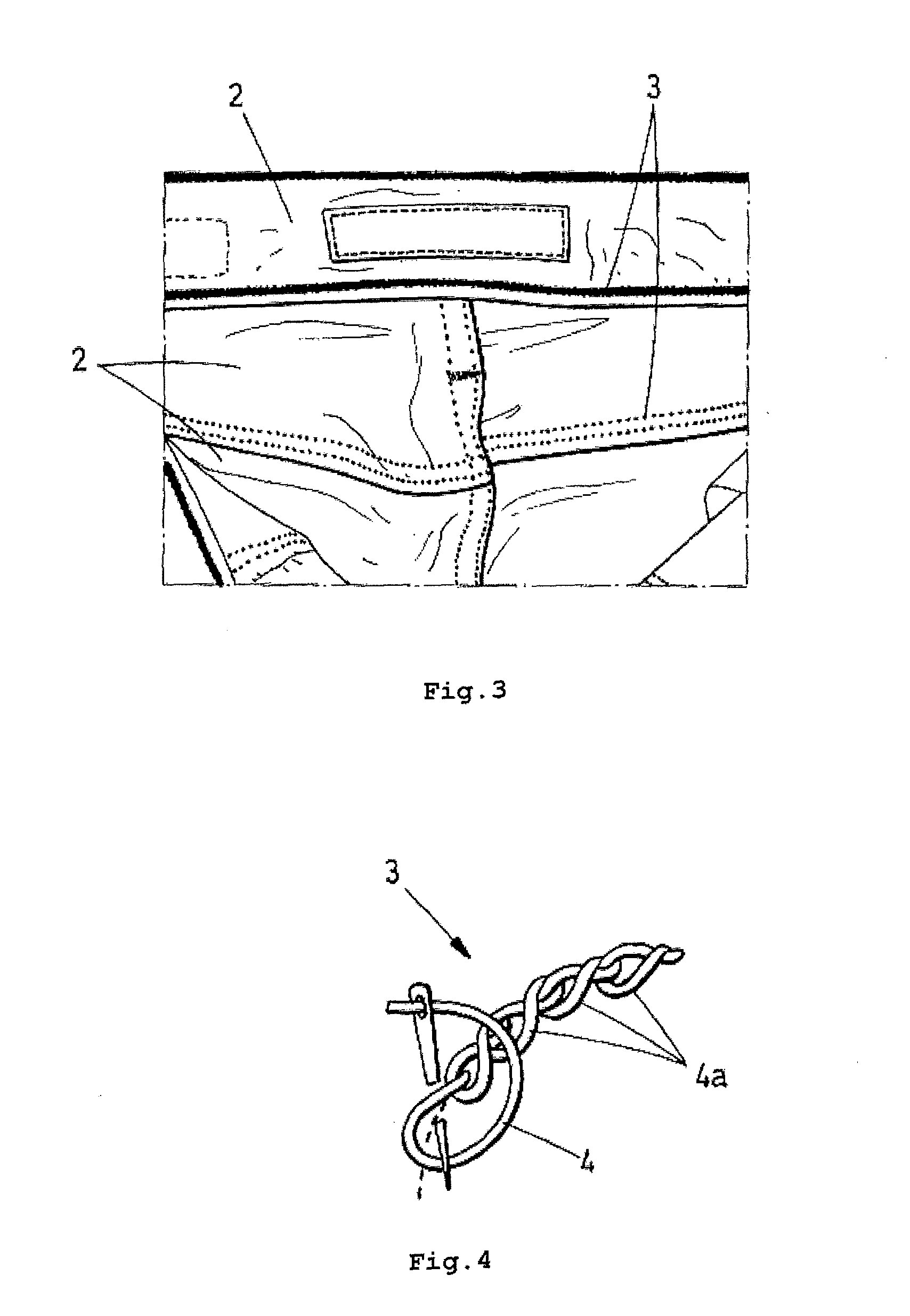Garment and manufacturing method
a manufacturing method and fabric technology, applied in the field of garments and manufacturing methods, can solve the problems of loss of elastic properties of elastane after several uses and washings, limited stretch, and inability to allow the material to return to its original size, so as to prolong the mechanical properties of said fibres, prevent the damage of raw materials and fabric elastic fibres, and excellent long-lasting elasticity
- Summary
- Abstract
- Description
- Claims
- Application Information
AI Technical Summary
Benefits of technology
Problems solved by technology
Method used
Image
Examples
Embodiment Construction
[0046]In light of the aforementioned figures and in accordance with the reference numbers included therein, a preferred, but non-limiting embodiment of a garment object of the present invention is hereby described. The embodiment described herein will refer to a pair of trousers although it can be applied to other garments or clothing.
[0047]Therefore, as can be seen in the figures, the pair of trousers (1) is made of pieces (2) of denim fabric, consisting of a very stretchy material, which comprises in the range of 65.4% and 65.6% in weight of cotton as a natural non-elastic fibre material, in the range of 30% and 32% in weight of texturized polyester, as a first synthetic non-elastic fibre material, and in the range of 3.4% and 3.6% in weight of elastane, preferably Lycra®, as a second synthetic elastic fibre material, being the first synthetic non elastic fibre and the second synthetic elastic fibre twisted together within the fabric. The different pieces of the fabric are joined ...
PUM
| Property | Measurement | Unit |
|---|---|---|
| humidity | aaaaa | aaaaa |
| humidity | aaaaa | aaaaa |
| humidity | aaaaa | aaaaa |
Abstract
Description
Claims
Application Information
 Login to View More
Login to View More - R&D
- Intellectual Property
- Life Sciences
- Materials
- Tech Scout
- Unparalleled Data Quality
- Higher Quality Content
- 60% Fewer Hallucinations
Browse by: Latest US Patents, China's latest patents, Technical Efficacy Thesaurus, Application Domain, Technology Topic, Popular Technical Reports.
© 2025 PatSnap. All rights reserved.Legal|Privacy policy|Modern Slavery Act Transparency Statement|Sitemap|About US| Contact US: help@patsnap.com



